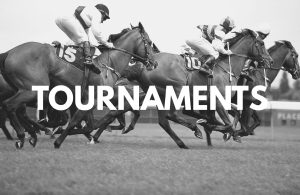
- Trainer PPs
- Sire PPs UPDATED
Fair Grounds Faces Closure: The Future of Horse Racing in New Orleans
- Updated: June 11, 2025
 Canva
Canva
The recent decision by Churchill Downs Incorporated (CDI) to potentially surrender its license to operate Fair Grounds Race Course & Slots in New Orleans, one of America’s oldest racetracks, marks a critical moment for horse racing in Louisiana and beyond. This move stems from a Louisiana Supreme Court ruling in March 2025 that declared historical horse racing (HHR) machines unconstitutional without local voter approval in each parish, effectively eliminating a significant revenue stream for CDI. Below, I’ll explore the implications for Fair Grounds, the broader impact of casino gaming on racetrack operations across the U.S., and strategies like regional or boutique meets, including any parallels with European racing models, while addressing the role of simulcast and advance deposit wagering (ADW).
Implications for Horse Racing at Fair Grounds
Fair Grounds, operational since 1838, is the third-oldest racetrack in the U.S. and a cornerstone of Louisiana’s horse racing industry, hosting the prestigious Louisiana Derby, a key prep race for the Kentucky Derby. CDI’s threat to exit, announced in June 2025, follows the loss of HHR machines, which accounted for 46% of Fair Grounds’ annual revenue and 74% of its after-tax profit in Louisiana. The company claims that without this income, it cannot cover the $9 million in annual operating and capital costs for the racetrack and its 13 off-track betting (OTB) parlors, putting the 2025–2026 racing season, traditionally starting in mid-November, at risk.
The immediate fallout includes a projected 25% reduction in purses at Fair Grounds, which paid out $32 million last year, half of Louisiana’s total. Lower purses could deter horsemen and breeders, weakening the local racing ecosystem and impacting jobs, agriculture, and tourism in New Orleans. CDI has invested nearly $200 million in Fair Grounds since acquiring it in 2004, and its potential departure could lead to the track’s closure, a devastating blow to a historic venue that also hosts the New Orleans Jazz & Heritage Festival.
However, skepticism surrounds CDI’s claims. Louis Roussel III, a former Fair Grounds owner, accused CDI of exaggerating losses to pressure the state, while the Louisiana Horsemen’s Benevolent and Protective Association expressed confidence in finding a solution to preserve the season. Legislative efforts are underway, with state Senator Jimmy Harris and Senate President Cameron Henry exploring compromises, though recent bills like House Bill 540 and 547, which CDI views as further eroding its revenue, complicate negotiations.
If CDI follows through, Fair Grounds could face a fate similar to other CDI-closed tracks like Arlington and Calder, where profitability disputes led to the end of racing. Alternatively, another operator could step in, though the track’s economic viability without HHR revenue remains uncertain. The situation underscores the fragility of horse racing in markets reliant on gaming subsidies.
Impact of Casino Gaming on Racetrack Operations Nationwide
Casino gaming, particularly slots and HHR machines, has become a double-edged sword for U.S. racetracks. Since the 1990s, many tracks have integrated casino operations to offset declining racing revenue, creating “racinos.” Fair Grounds, with its 600 slot machines and HHR-equipped OTB parlors, exemplifies this model. These gaming revenues often subsidize racing purses, attracting better horses and sustaining operations. For instance, HHR has been credited with reviving racing in states like Wyoming, where live races grew from zero in 2010 to 467 in 2023 after HHR legalization.
However, reliance on gaming can make tracks vulnerable to regulatory changes, as seen in Louisiana. The 2020 Kentucky Supreme Court ruling against certain HHR systems as non-pari-mutuel wagering prompted a similar legal challenge in Louisiana, where a 1996 constitutional amendment requires voter approval for new gambling forms. The resulting ban on HHR machines disrupted Fair Grounds’ financial model, mirroring challenges in states like Texas, where HHR rules were repealed in 2014, contributing to the near-extinction of horse racing.
Nationwide, casino gaming has also shifted focus from live racing to gaming floors, reducing the sport’s cultural prominence. Tracks like Delaware Park and Parx Racing depend heavily on slots, but this often fails to translate into increased racing attendance, as casual gamblers rarely engage with the track. In Florida, a 2023–2024 stimulus package of over $66 million supported racing, but decoupling laws allowing casinos to operate without live racing have almost led to closures of tracks like Tampa Bay Downs’ racing operations. This trend highlights how gaming can both sustain and undermine horse racing.
Simulcast, ADW, and Declining Racetrack Attendance
The rise of simulcast wagering and ADW platforms, such as TwinSpires (owned by CDI), has significantly altered horse racing’s landscape. Simulcasting, which allows betting on races broadcast from other tracks, and ADW, enabling online wagering, have made it convenient for fans to bet without attending live events. While these innovations expanded betting handle—Fair Grounds’ $250 million last year was half of Louisiana’s total—they’ve contributed to dwindling on-track attendance. Fans can wager from home or OTB parlors, reducing the incentive to visit racetracks.
This shift has hurt tracks’ ancillary revenue from tickets, concessions, and parking, making them more dependent on gaming or subsidies. The decline in live attendance also diminishes the sport’s atmosphere, weakening its appeal to younger audiences. Posts on X reflect nostalgia for Fair Grounds’ historic role, suggesting that its potential closure could further erode horse racing’s cultural significance.
Strategies: Regional Meets, Boutique Meets, and European Parallels
To counter these challenges, racetrack operators are exploring consolidated racing schedules, such as regional or boutique meets, which concentrate high-quality racing into shorter, event-driven periods. Fair Grounds already operates a seasonal meet from November to March, akin to a regional model, focusing on major races like the Louisiana Derby. This approach maximizes purse money and attracts top horses, drawing crowds for marquee events rather than diluted year-round racing.
Boutique meets, like those at Keeneland or Saratoga, offer short, festival-like seasons with premium racing and social appeal. Fair Grounds could adopt this model by enhancing its cultural events, leveraging New Orleans’ vibrant tourism to create a racing festival experience, similar to its Jazz Fest integration. Such meets prioritize quality over quantity, countering the attendance drop from simulcast and ADW by making live racing a must-attend spectacle.
European racing provides a compelling parallel. Tracks like Ascot and Longchamp focus on high-stakes, limited-date meets that blend sport, fashion, and social prestige, drawing diverse crowds. European racing also benefits from centralized betting pools and lower takeout rates, increasing bettor value and supporting purses without heavy gaming reliance. U.S. tracks, including Fair Grounds, could emulate this by reducing race days, enhancing fan experiences with music and dining, and advocating for betting reforms. However, cultural differences—European racing’s deep societal roots versus America’s gaming-driven model—pose challenges.
CDI’s own history suggests a pivot to boutique or regional meets could work. Its success with Derby City Gaming in Kentucky, a standalone HHR parlor, shows that separating gaming from racing can fund high-quality meets elsewhere. If Louisiana lawmakers restore HHR or offer subsidies, Fair Grounds might adopt a shorter, high-impact season to remain viable.
Conclusion
CDI’s potential exit from Fair Grounds, driven by the Louisiana Supreme Court’s HHR ruling, threatens a historic racetrack and Louisiana’s racing industry. The loss of HHR revenue exposes the fragility of racinos, a model that has both sustained and complicated U.S. racetracks amid competition from casino gaming. Simulcast and ADW have further eroded live attendance, pushing operators toward strategies like regional or boutique meets, which echo European racing’s focus on quality and spectacle. For Fair Grounds, survival may hinge on legislative intervention, a new operator, or a reimagined racing model that leverages New Orleans’ cultural allure. The outcome will shape not only local racing but also the broader narrative of horse racing’s adaptation in a gaming-dominated era.



